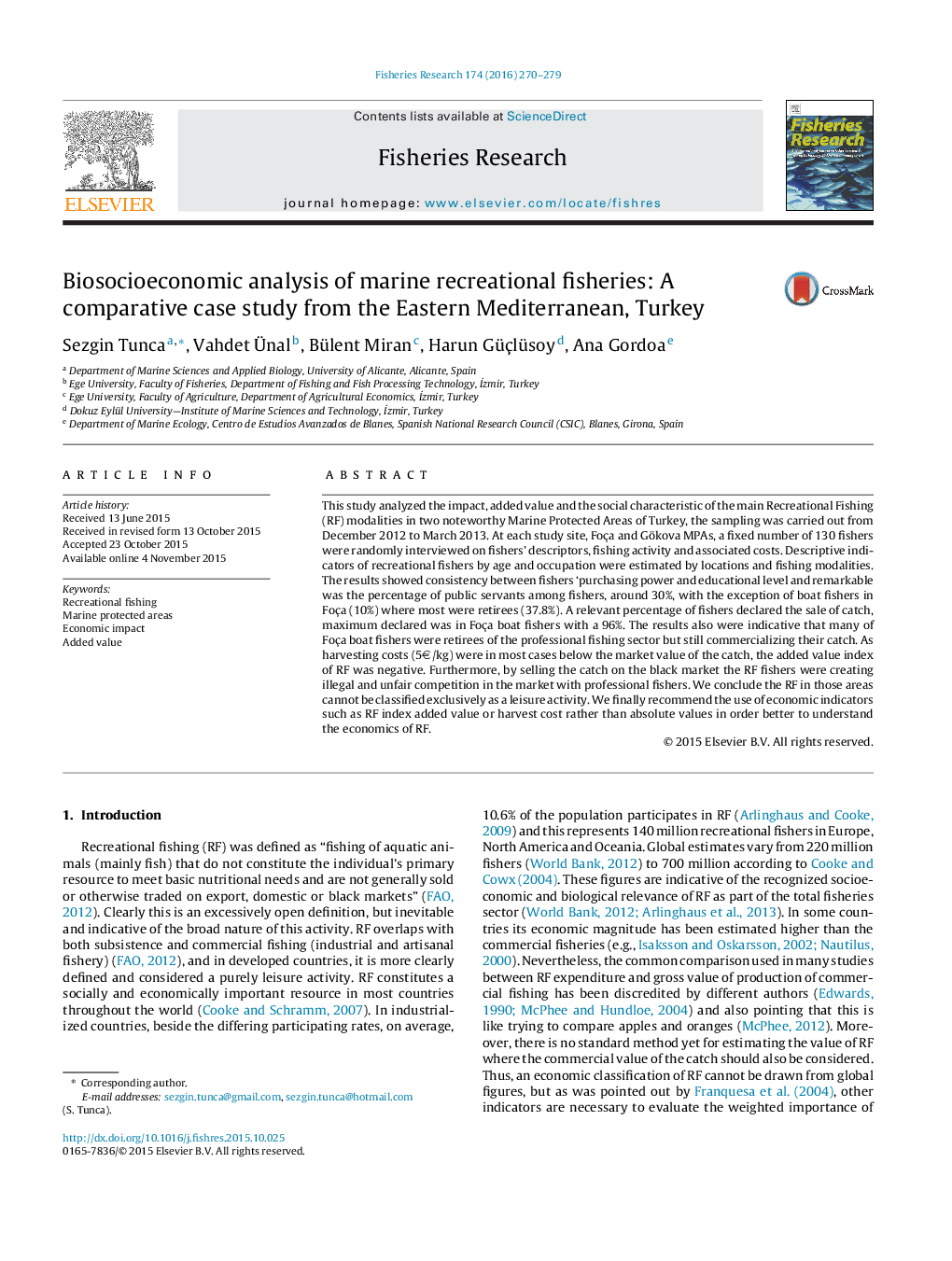| Article ID | Journal | Published Year | Pages | File Type |
|---|---|---|---|---|
| 6385613 | Fisheries Research | 2016 | 10 Pages |
Abstract
This study analyzed the impact, added value and the social characteristic of the main Recreational Fishing (RF) modalities in two noteworthy Marine Protected Areas of Turkey, the sampling was carried out from December 2012 to March 2013. At each study site, Foça and Gökova MPAs, a fixed number of 130 fishers were randomly interviewed on fishers' descriptors, fishing activity and associated costs. Descriptive indicators of recreational fishers by age and occupation were estimated by locations and fishing modalities. The results showed consistency between fishers 'purchasing power and educational level and remarkable was the percentage of public servants among fishers, around 30%, with the exception of boat fishers in Foça (10%) where most were retirees (37.8%). A relevant percentage of fishers declared the sale of catch, maximum declared was in Foça boat fishers with a 96%. The results also were indicative that many of Foça boat fishers were retirees of the professional fishing sector but still commercializing their catch. As harvesting costs (5â¬/kg) were in most cases below the market value of the catch, the added value index of RF was negative. Furthermore, by selling the catch on the black market the RF fishers were creating illegal and unfair competition in the market with professional fishers. We conclude the RF in those areas cannot be classified exclusively as a leisure activity. We finally recommend the use of economic indicators such as RF index added value or harvest cost rather than absolute values in order better to understand the economics of RF.
Related Topics
Life Sciences
Agricultural and Biological Sciences
Aquatic Science
Authors
Sezgin Tunca, Vahdet Ãnal, Bülent Miran, Harun Güçlüsoy, Ana Gordoa,
